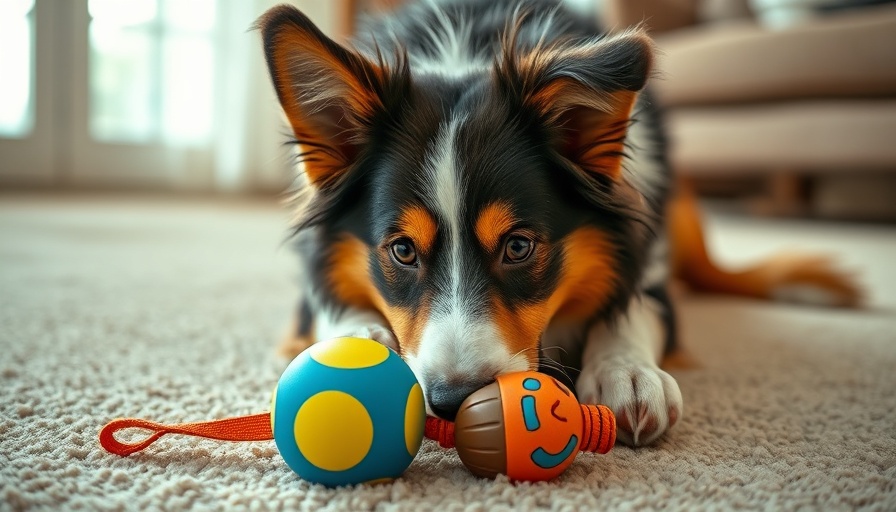
Keep Your Furry Friends Engaged: The Importance of Interactive Dog Toys
As pet owners, we all know how much joy our dogs bring to our lives. However, when left alone for extended periods, these lovable companions can easily become bored or anxious. This is where interactive dog toys come into play. Designed to engage your pup’s mind and body, interactive toys not only provide entertainment but also contribute significantly to their overall well-being. With so many options available, it’s crucial to choose toys that align with your dog’s personality, interests, and needs.
Understanding the Features of Interactive Dog Toys
In 2025, the diverse range of interactive dog toys offers something for every personality—from puzzle toys that challenge their minds to treat dispensers that slow down fast eaters. Key features to consider when selecting an interactive toy include:
Durability: Choose toys that can withstand rigorous chewing, especially for powerful chewers.
Ease of Cleaning: Toys that can be easily cleaned help maintain your dog’s health.
Interactive Features: Engage your dog with various textures, sounds, and challenges to keep them entertained.
Size and Material: Ensure the toy suits your dog’s size and is made from pet-safe materials.
Top Choices: 10 Best Interactive Dog Toys of 2025
After thorough testing and evaluation, here are the best interactive dog toys of 2025:
Frisco Hide and Seek Toy: A fan favorite, this plush puzzle stimulates your dog’s hunting instincts.
Ethical Pet Sensory Ball: Designed for sensory engagement, it comes in various sizes, making it accessible to all breeds.
PAW5 Wooly Snuffle Feed: Ideal for dogs that tend to eat too quickly, this toy encourages foraging behavior.
Outward Hound Hide: This adorable toy features multiple squeaky animals hidden within a plush structure.
KONG Wobbler Toy: This classic is perfect for mealtime fun and exercise, as it dispenses treats while wobbling unpredictably.
Chuckit! Ultra Ball: Excellent for fetch-loving dogs, it's designed to withstand heavy chewing and lasts longer than standard tennis balls.
Trixie Flip Board: A puzzle toy that encourages mental stimulation through varying difficulty levels.
Wobble Wag Giggle Ball: This interactive ball entertains with noise and movement, but is best for lighter play.
Benebone Wishbone: A durable chew alternative that comes flavored to keep your dog engaged over long periods.
Jolly Pets Tug-n-Toss: Great for tug-of-war games, this toy is durable and encourages vigorous play.
Importance of Regular Playtime: Keeping the Bond Strong
Interactive toys serve as excellent tools for bonding with your dog. Playtime not only strengthens your relationship but also allows you to understand your pet's preferences better. Dogs thrive on interaction and mental challenges. For example, toys like the KONG Classic or PAW5 Wooly Snuffle Feed can be filled with your dog’s favorite treats, turning playtime into an exciting challenge. Meanwhile, the Trixie Flip Board Level 2 guides your dog through problem-solving paths, reinforcing positive behaviors and mental acuity.
How to Choose the Right Interactive Toy for Your Dog
When selecting an interactive dog toy, consider your dog’s age, size, and activity level. Younger, more energetic dogs might prefer toys that promote physical play, like throwing or tugging toys, while older dogs may benefit from mental puzzles that keep them engaged without requiring much physical exertion.
Furthermore, consult with your veterinarian when in doubt. They can provide recommendations based on your dog's health and behavior. Moreover, engaging in shared activities enhances the bond with your furry friend, making their playtime more fulfilling.
Final Thoughts on Interactive Dog Toys
With countless options, choosing the best interactive dog toy can feel overwhelming. However, being attuned to your dog's preferences, needs, and peculiarities allows you to select a toy that not only entertains but also enriches their life. As we dive deeper into 2025, investing in quality interactive toys can lead to happier, healthier dogs. Let the fun—and bonding—begin!
For a more engaging playtime experience with your furry friend, check out our comprehensive reviews and links to the top picks of 2025!
 Add Row
Add Row  Add
Add 




Write A Comment